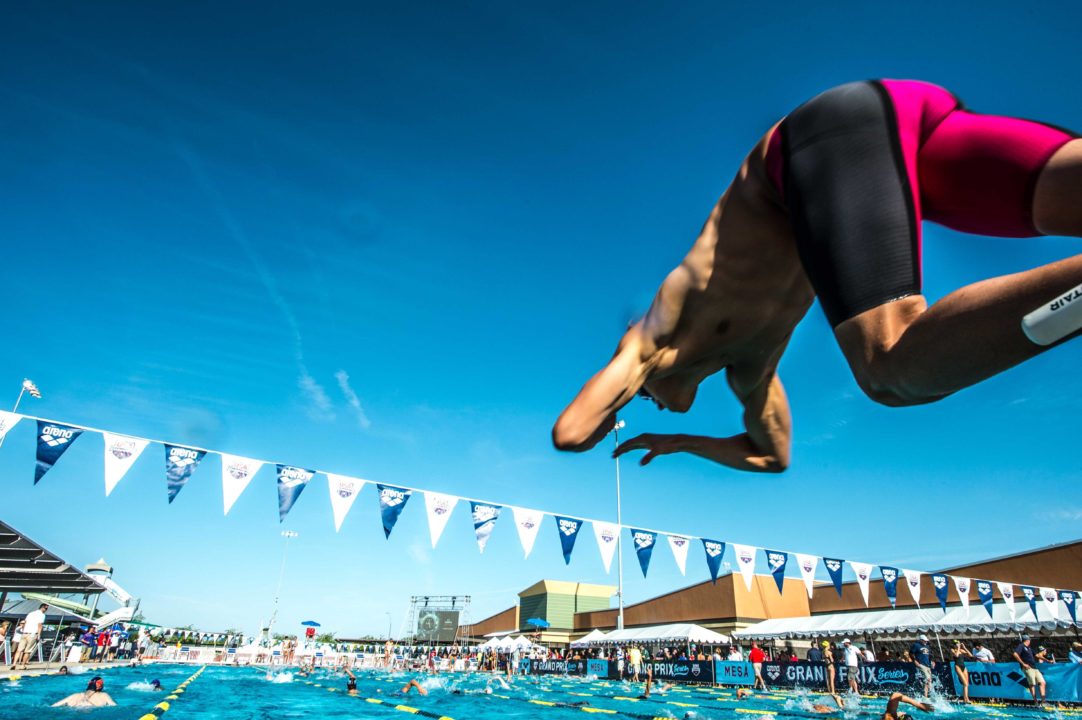Courtesy of Tim Crowley, Head Strength & Conditioning Coach, Montverde Academy, and VASA, a SwimSwam partner.
While there’s nothing as essential for swimming as water, there are plenty of ways you can improve your swimming performance without getting wet. For those athletes who have trouble getting to the pool as often as they might like, effective dry-land training can be a helpful fallback.
Optimal body position and stroke technique are crucial for a fast swim, but they’re not the only key elements. Applying more force to the water throughout each stroke—while maintaining correct technique and body position—will also make you go faster. By building power and the endurance to deliver that power efficiently, you will be able to swim faster with no increase in exertion.
Dry-land training with ergometers and stretch cords is very effective for developing power and muscular endurance, because both ergometers and stretch cords deliver consistent resistance throughout an exercise set. You can also develop the muscles responsible for stroke recovery by changing your position relative to the stretch cords, which is particularly vital to athletes unaccustomed to swimming in a full wetsuit.
For a faster, more efficient swim leg next season, try incorporating these exercises into your swim training this winter.
Swim-erg set
 Vasa makes an innovative dry-land swim ergometer, which is basically a power meter for swimming. As you “swim” using the paddles and cables, you’re able to monitor pace per 100m, watts, and stroke rate, as well as right-arm and left-arm power, which allows you to visually monitor each stroke for balanced power output. Even if you only have occasional access to a swim ergometer, you can do some specific testing to determine power output while comparing wattage for each arm. By experimenting with different stroke rates you can find the turnover rate that gives you maximal wattage with minimal effort.
Vasa makes an innovative dry-land swim ergometer, which is basically a power meter for swimming. As you “swim” using the paddles and cables, you’re able to monitor pace per 100m, watts, and stroke rate, as well as right-arm and left-arm power, which allows you to visually monitor each stroke for balanced power output. Even if you only have occasional access to a swim ergometer, you can do some specific testing to determine power output while comparing wattage for each arm. By experimenting with different stroke rates you can find the turnover rate that gives you maximal wattage with minimal effort.
Power intervals on the erg
• Warm up for 3-5 minutes (vary strokes and drills)
• 5-20 x 1-minute maximal power output, with one minute of rest between efforts
Calculate the average watts for the first two intervals. This now becomes your goal wattage for the remainder of the workout. Maintain the same stroke rate, and aim to keep the watts within 10 percent of this goal wattage. Example: interval one is 68 watts and interval two is 72 watts. Goal wattage is 70 watts. If the subsequent 1-minute power intervals drop below 63 watts (10-percent decay) then the workout is over and it is time to cool down.
Stretch-cords session
While swimming ergometers may not be available to everyone, stretch cords should be part of all triathletes’ swimming toolkits. Workouts with tubing can be done anywhere in as little as 10 minutes’ time. Since there is no objective feedback, as in ergometer workouts, you will need to pay close attention to your form so you do not develop any bad habits. Inserting tubing sets on days between pool workouts or before or after swim sessions will inject some power-endurance into your swim training.
To keep the workout interesting, use a variety of simulated strokes: freestyle, butterfly, reverse free and fly (resisted recover stroke), and catch-up stroke. Below is a sample session. If you use a tempo trainer or metronome, replicate your normal stroke rate. Modify the resistance by changing how far you stretch the cords. Make sure the tubing allows you to complete the entire stroke and that it is free of cuts and nicks, so it doesn’t snap.
• Warm-up: 3 x 45 seconds easy arm swings at light resistance, 15 seconds rest between sets
• 3 x 50 seconds each exercise: freestyle, reverse freestyle (facing away from the tubing anchor point), butterfly and reverse butterfly, with 10 seconds rest between sets.
Working out with tubing sets allows you to “swim” when you are traveling or can’t get to the pool. By integrating swim-specific power training, you can maintain or lessen pool time while sustaining or even improving performance. This tactic is similar to using an indoor cycling trainer or treadmill for specific interval sessions. Although there is no substitute for swimming in the water, these two workouts are certainly the next best thing.
Take-home message
• For athletes having trouble getting to the pool as often as they might like, effective dry-land training can be a saving grace, as it is very effective for developing power and muscular endurance.
• While swimming ergometers may not be available to everyone, stretch cords should be part of all triathletes’ swimming toolkits.
• By integrating swim-specific dry-land power training, you can maintain or lessen pool time while sustaining or even improving performance.
Since 1988, Vasa has produced premium quality training equipment for sports, fitness and rehabilitation. For decades, Olympic-level swimmers, swim coaches, triathletes, triathlon coaches, and dry land conditioning coaches worldwide have selected the Vasa Trainer and Vasa Ergometer to dramatically improve performance for swimmers, surfers, paddlers, skiers, triathletes and those seeking total-body fitness.

